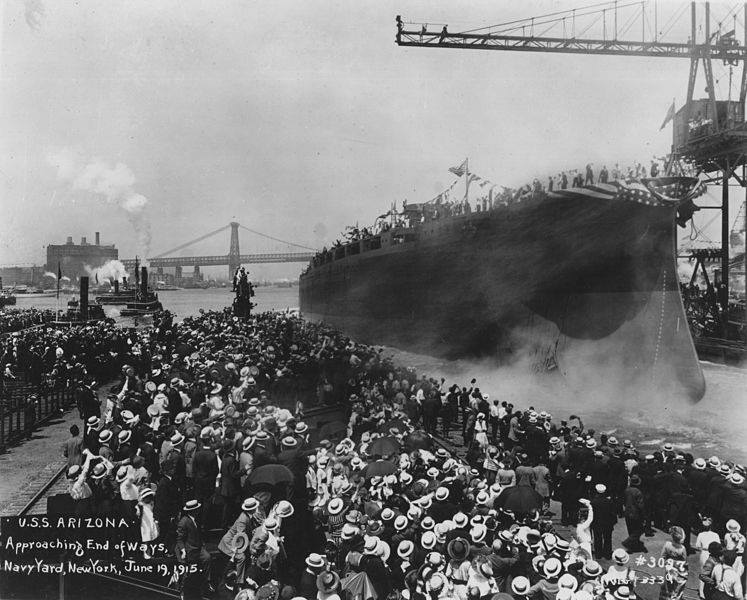
January 28th, 1917 Tombstone Epitaph headline announcing legislative concern over the proposed state flag design. This design that “looked too much like the Japanese emblem” was adopted as Arizona’s official state flag the following month.
A full five years passed between Arizona’s admission to the Union and its adoption of an official state flag. A variety of factors – legislative bickering among them – led to a half-decade elapsing before the “Baby State” had a standard of its own. While the design approved by state legislators in 1917 is well-regarded today, as evidenced by the North American Vexillological Association honoring it as one of the best flags in North America, it initially faced serious opposition.
A flag very similar to that flown today was first put into service by the Arizona Rifle Team during a 1911 match at Camp Perry, OH. A variation of this same design, although not then the official state flag, was displayed at the 1915 dedication of the U.S.S. Arizona. Despite these and other instances in which the Rifle Team flag or a version thereof served, albeit unofficially, as Arizona’s colors, state legislators remained hesitant to formalize the design. A January 1917 bill proposing adoption of the de facto flag as the state’s official flag met resistance from solons and citizens alike. Los Angeles Times articles documented concern that the rays and copper star featured on the flag under discussion bore a “similitude to the Japanese ensign,” and mentioned talk of including a “Gila monster couchant, within a copper collar” on the flag. A proposal to shift the line dividing the rays from the field of blue below from a horizontal to a diagonal orientation languished due after being unfavorably compared to “an astrological chart.”
In the end, legislators passed a bill adopting a design bearing “the copper star of Arizona rising from a blue field in the face of a setting sun” as the state’s official flag. Though Governor Thomas Campbell declined to sign the bill because, as speculated by the Arizona Republican newspaper, “the flag did not measure up to his ideals of what a state emblem should be,” the bill became law after five days of gubernatorial inaction. Campbell was ousted from office in December of 1917 following a court decision declaring George W.P. Hunt the victor of the contentious 1916 race (Campbell would return to the governorship in 1919). However, the Arizona state flag made official by his inaction flies over the capitol building in which he served to this day.

